formerly eScholarship Editions


|
|
|
|
Your search for
'Art History' in subject
found 61 book(s). | Modify Search | Displaying 41 - 60 of 61 book(s) | |
| 41. | 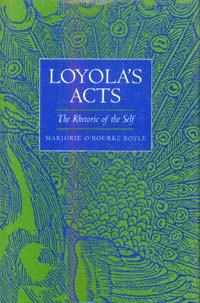 | Title: Loyola's acts: the rhetoric of the self Author: Boyle, Marjorie O'Rourke 1943- Published: University of California Press, 1997 Subjects: Literature | Renaissance History | Christianity | Rhetoric | Art History | Medieval History Publisher's Description: This revisionist view of Ignatius Loyola argues that his "autobiography" - until now taken to be a literal, documentary account - is in reality a work of rhetoric, a moral narrative that exploits the techniques of fiction. In radically reinterpreting this canonical text, our main source of information about the founder of the largest and most powerful religious order in Roman Catholicism, Boyle paints a vivid picture of Loyola's world. She surveys rhetorical and artistic theory, religious iconography, everyday custom, and an astonishing array of scenes and subjects: from curiosity, to codes of honor, to the holy places of Spain, to the significance of apparitions and flying serpents.Written in the tradition of Renaissance studies on individualism, Loyola's Acts engages current interest in autobiography and in the history of private life. The book also provides a powerful heuristic for interpreting a wide range of texts of the Christian tradition. Finally, this secular treatment of a canonized saint provides revealing insights into how a prestigious sixteenth-century figure like Loyola understood himself. [brief] Similar Items |
| 42. | 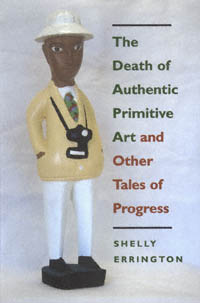 | Title: The death of authentic primitive art and other tales of progress Author: Errington, Shelly 1944- Published: University of California Press, 1998 Subjects: Anthropology | Cultural Anthropology | Art History | Architectural History | Art Theory Publisher's Description: In this lucid, witty, and forceful book, Shelly Errington argues that Primitive Art was invented as a new type of art object at the beginning of the twentieth century but that now, at the century's end, it has died a double but contradictory death. Authenticity and primitivism, both attacked by cultural critics, have died as concepts. At the same time, the penetration of nation-states, the tourist industry, and transnational corporations into regions that formerly produced these artifacts has severely reduced supplies of "primitive art," bringing about a second "death."Errington argues that the construction of the primitive in the nineteenth and twentieth centuries (and the kinds of objects chosen to exemplify it) must be understood as a product of discourses of progress - from the nineteenth-century European narrative of technological progress, to the twentieth-century narrative of modernism, to the late- twentieth-century narrative of the triumph of the free market. In Part One she charts a provocative argument ranging through the worlds of museums, art theorists, mail-order catalogs, boutiques, tourism, and world events, tracing a loosely historical account of the transformations of meanings of primitive art in this century. In Part Two she explores an eclectic collection of public sites in Mexico and Indonesia - a national museum of anthropology, a cultural theme park, an airport, and a ninth-century Buddhist monument (newly refurbished) - to show how the idea of the primitive can be used in the interests of promoting nationalism and economic development.Errington's dissection of discourses about progress and primitivism in the contemporary world is both a lively introduction to anthropological studies of art institutions and a dramatic new contribution to the growing field of cultural studies. [brief] Similar Items |
| 43. | 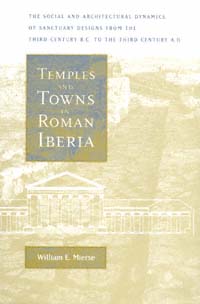 | Title: Temples and towns in Roman Iberia: the social and architectural dynamics of sanctuary designs from the third century B.C. to the third century A.D Author: Mierse, William E Published: University of California Press, 1999 Subjects: Classics | Archaeology | Art and Architecture | Architectural History | Art History Publisher's Description: This is the first comparative study of Roman architecture on the Iberian peninsula, covering six centuries from the arrival of the Romans in the third century B.C. until the decline of urban life on the peninsula in the third century A.D. During this period, the peninsula became an influential cultural and political region in the Roman world. Iberia supplied writers, politicians, and emperors, a fact acknowledged by Romanists for centuries, though study of the peninsula itself has too often been brushed aside as insignificant and uninteresting. In this book William E. Mierse challenges such a view.By examining in depth the changing forms of temples and their placement within the urban fabric, Mierse shows that architecture on the peninsula displays great variation and unexpected connections. It was never a slavish imitation of an imported model but always a novel experiment. Sometimes the architectural forms are both new and unexpected; in some cases specific prototypes can be seen, but the Iberian form has been significantly altered to suit local needs. What at first may seem a repetition of forms upon closer investigation turns out to be theme and variation. Mierse brings to his quest an impressive learning, including knowledge of several modern and ancient languages and the archaeology of the Roman East, which allows him a unique perspective on the interaction between events and architecture. [brief] Similar Items |
| 44. | 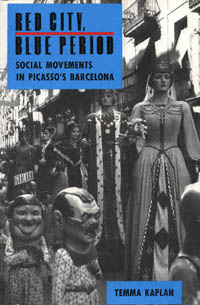 | Title: Red city, blue period: social movements in Picasso's Barcelona Author: Kaplan, Temma 1942- Published: University of California Press, 1992 Subjects: History | Art | European History | Cultural Anthropology | Gender Studies | Art History Publisher's Description: In Red City, Blue Period , Kaplan combines the methods of anthropology and the new cultural history to examine the civic culture of Barcelona between 1888 and 1939. She analyzes the peculiar sense of solidarity the citizens forged and explains why shared experiences of civic culture and pageantry sometimes galvanized resistance to authoritarian national governments but could not always overcome local class and gender struggles. She sheds light on the process by which principles of regional freedom and economic equity developed and changed in a city long known for its commitment to human dignity and artistic achievement.Although scholars increasingly recognize the relationship between so-called high art and popular culture, little has been done to explain what opens the eyes of artists to folk figures and religious art. Kaplan shows how artists like Picasso and Joan Miró, playwright Santiago Russinyol, the cellist Pablo Casals, and the architect Antonio Gaudí, as well as anarchists and other political activists, both shaped and were influenced by the artistic and political culture of Barcelona. [brief] Similar Items |
| 45. | 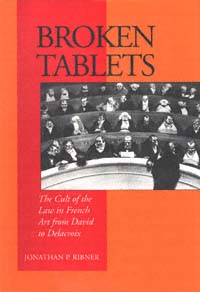 | Title: Broken tablets: the cult of the law in French art from David to Delacroix Author: Ribner, Jonathan P Published: University of California Press, 1993 Subjects: Art | Art History | French Studies | European Literature | European History | Law Publisher's Description: In this first study of art, law, and the legislator, Jonathan Ribner provides a revealing look at French art from 1789 to 1848, the period in which constitutional law was established in France. Drawing on several disciplines, he discusses how each of the early constitutional regimes in France used imagery suggesting the divine origin and sacred character of its laws.Primarily a study of art and politics, Broken Tablets discusses painting, sculpture, prints, and medals (many reproduced here for the first time), as well as contemporary literature, including the poetry of Alfred de Vigny, Alphonse de Lamartine, and Victor Hugo. Ribner assesses the ways in which legislation imagery became an instrument of political propaganda, and he clearly illuminates the cult of the law as it became personalized under Napoleon, monarchist under the Restoration, and defensive under Louis-Phillipe. [brief] Similar Items |
| 46. | 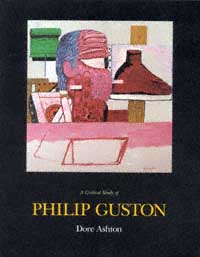 | Title: A critical study of Philip Guston Author: Ashton, Dore Published: University of California Press, 1990 Subjects: Art | Art History | Art Criticism | Autobiographies and Biographies Publisher's Description: Dore Ashton has updated the bibliography and added a new concluding chapter to her classic study of the paintings and drawings of Philip Guston, the only study of his work completely authorized by the artist.Philip Guston (1913-1980) was one of the most independent of the painters whose work was loosely linked by the term "abstract expressionism" during the 1950s, and he baffled admirers of his lushly beautiful abstract expressionist paintings by moving abruptly in mid-career to gritty figurative paintings in an almost cartoon-like style. One of the few critics who saw this at the time as a progressive development in his work was Dore Ashton, who here analyzes Guston's paintings and drawings in the context of the cultural milieu in which he worked, illuminating the dilemma facing artists who try to live with, understand, and express both the ideals of art and the reality of the world. [brief] Similar Items |
| 47. | 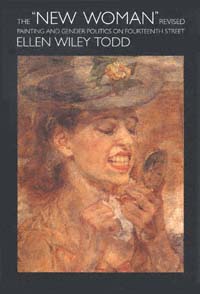 | Title: The "new woman" revised: painting and gender politics on fourteenth street Author: Todd, Ellen Wiley Published: University of California Press, 1993 Subjects: Art | Art History | United States History | Women's Studies | American Studies Publisher's Description: In the years between the world wars, Manhattan's Fourteenth Street-Union Square district became a center for commercial, cultural, and political activities, and hence a sensitive barometer of the dramatic social changes of the period. It was here that four urban realist painters - Kenneth Hayes Miller, Reginald Marsh, Raphael Soyer, and Isabel Bishop - placed their images of modern "new women." Bargain stores, cheap movie theaters, pinball arcades, and radical political organizations were the backdrop for the women shoppers, office and store workers, and consumers of mass culture portrayed by these artists. Ellen Wiley Todd deftly interprets the painters' complex images as they were refracted through the gender ideology of the period.This is a work of skillful interdisciplinary scholarship, combining recent insights from feminist art history, gender studies, and social and cultural theory. Drawing on a range of visual and verbal representations as well as biographical and critical texts, Todd balances the historical context surrounding the painters with nuanced analyses of how each artist's image of womanhood contributed to the continual redefining of the "new woman's" relationships to men, family, work, feminism, and sexuality. [brief] Similar Items |
| 48. | 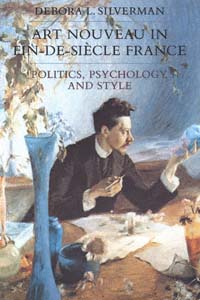 | Title: Art nouveau in fin-de-siècle France: politics, psychology, and style Author: Silverman, Debora Leah Published: University of California Press, 1989 Subjects: History | Art History | French Studies | European History | Intellectual History Similar Items |
| 49. | 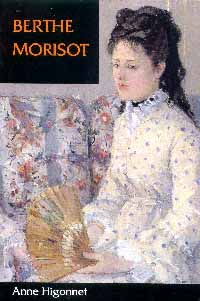 | Title: Berthe Morisot Author: Higonnet, Anne 1959- Published: University of California Press, 1995 Subjects: Art | Art History | Autobiographies and Biographies | Women's Studies Publisher's Description: Of the six Impressionist painters whose first exhibition scandalized and fascinated Paris in 1874, Berthe Morisot was the only woman. She reached a pinnacle of artistic achievement despite the restraints society placed on her sex, adroitly combining her artistic ambitions with a rewarding family lif . . . [more] Similar Items |
| 50. | 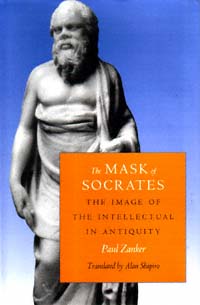 | Title: The mask of Socrates: the image of the intellectual in antiquity Author: Zanker, Paul Published: University of California Press, 1996 Subjects: Classics | Art History | Art and Architecture | Ancient History Publisher's Description: This richly illustrated work provides a new and deeper perspective on the interaction of visual representation and classical culture from the fifth century B.C. to the fourth century A.D. Drawing on a variety of source materials such as Graeco-Roman literature, historiography, and philosophy, in addition to artistic renderings, Paul Zanker forges the first comprehensive history of the visual representation of Greek and Roman intellectuals. He takes the reader from the earliest visual images of Socrates and Plato to the figures of Christ, the Apostles, and contemporaneous pagan and civic dignitaries.Through his interpretations of postures, gestures, facial expressions, and stylistic changes of particular set pieces, we come to know these great poets and philosophers through all of their various personas - the prophetic wise man, the virtuous democratic citizen, or the self-absorbed bon vivant. Zanker's analysis of how the iconography of influential thinkers and writers changed demonstrates the rise and fall of trends and the movement of schools of thought and belief, each successively embodying the most valued characteristics of the period and culture. [brief] Similar Items |
| 51. | 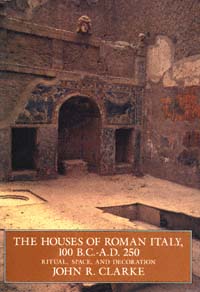 | Title: The houses of Roman Italy, 100 B.C.-A.D. 250: ritual, space, and decoration Author: Clarke, John R 1945- Published: University of California Press, 1992 Subjects: Classics | Art and Architecture | Architectural History | Art History Publisher's Description: In this richly illustrated book, art historian John R. Clarke helps us see the ancient Roman house "with Roman eyes." Clarke presents a range of houses, from tenements to villas, and shows us how enduring patterns of Roman wall decoration tellingly bear the cultural, religious, and social imprints of the people who lived with them.In case studies of seventeen excavated houses, Clarke guides us through four centuries of Roman wall painting, mosaic, and stucco decoration, from the period of the "Four Styles" (100 B.C. to A.D. 79) to the mid- third century. The First Style Samnite House shows its debt to public architecture in its clear integration of public and private spaces. The Villa of Oplontis asserts the extravagant social and cultural climate of the Second Style. Gemlike Third-Style rooms from the House of Lucretius Fronto reflect the refinement and elegance of Augustan tastes. The Vettii brothers' social climbing helps explain the overburdened Fourth-Style decoration of their famous house. And evidence of remodelling leads Clarke to conclude that the House of Jupiter and Ganymede became a gay hotel in the second century.In his emphasis on social and spiritual dimensions, Clarke offers a contribution to Roman art and architectural history that is both original and accessible to the general reader. The book's superb photographs not only support the author's findings but help to preserve an ancient legacy that is fast succumbing to modern deterioration resulting from pollution and vandalism. [brief] Similar Items |
| 52. | 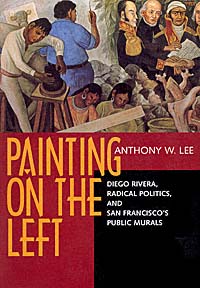 | Title: Painting on the left: Diego Rivera, radical politics, and San Francisco's public murals Author: Lee, Anthony W 1960- Published: University of California Press, 1999 Subjects: Art | Art History | Californian and Western History | California and the West Publisher's Description: The boldly political mural projects of Diego Rivera and other leftist artists in San Francisco during the 1930s and early 1940s are the focus of Anthony W. Lee's fascinating book. Led by Rivera, these painters used murals as a vehicle to reject the economic and political status quo and to give visible form to labor and radical ideologies, including Communism.Several murals, and details of others, are reproduced here for the first time. Of special interest are works by Rivera that chart a progress from mural paintings commissioned for private spaces to those produced as a public act in a public space: Allegory of California, painted in 1930-31 at the Stock Exchange Lunch Club; Making a Fresco, Showing the Building of a City , done a few months later at the California School of Fine Arts; and Pan American Unity , painted in 1940 for the Golden Gate International Exposition.Labor itself became a focus of the new murals: Rivera painted a massive representation of a construction worker just as San Francisco's workers were themselves organizing; Victor Arnautoff, Bernard Zakheim, John Langley Howard , and Clifford Wight painted panels in Coit Tower that acknowledged the resolve of the dockworkers striking on the streets below. Radical in technique as well, these muralists used new compositional strategies of congestion, misdirection, and fragmentation, subverting the legible narratives and coherent allegories of traditional murals.Lee relates the development of wall painting to San Francisco's international expositions of 1915 and 1939, the new museums and art schools, corporate patronage, and the concerns of immigrants and ethnic groups. And he examines how mural painters struggled against those forces that threatened their practice: the growing acceptance of modernist easel painting, the vagaries of New Deal patronage, and a wartime nationalism hostile to radical politics. [brief] Similar Items |
| 53. | 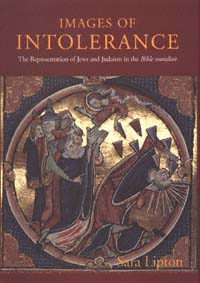 | Title: Images of intolerance: the representation of Jews and Judaism in the Bible moralisée Author: Lipton, Sara 1962- Published: University of California Press, 1999 Subjects: Jewish Studies | Medieval Studies | French Studies | Medieval History | Art History | Judaism Publisher's Description: Around the year 1225, an illuminated Bible was made for the king of France. That work and a companion volume, the two earliest surviving manuscripts of the Bible moralisée , are remarkable in a number of ways: they are massive in scope; they combine text and image to an unprecedented extent; and their illustrations, almost unique among medieval images in depicting contemporary figures and situations, comprise a vehement visual polemic against the Jews. In Images of Intolerance , Sara Lipton offers a nuanced and insightful reading of these extraordinary sources.Lipton investigates representations of Jews' economic activities, the depiction of Jews' scriptures in relation to Christian learning, the alleged association of Jews with heretics and other malefactors in Christian society, and their position in Christian eschatology. Jews are portrayed as threatening the purity of the Body of Christ, the integrity of the text of scripture, the faith, mores, and study habits of students, and the spiritual health of Christendom itself. Most interesting, however, is that the menacing themes in the Bible moralisée are represented in text and images as aspects of Jewish "perfidy" that are rampant among Christians as well. This innovative interdisciplinary study brings new understanding to the nature and development of social intolerance, and to the role art can play in that development. [brief] Similar Items |
| 54. | 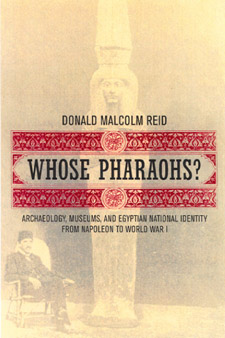 | Title: Whose pharaohs?: archaeology, museums, and Egyptian national identity from Napoleon to World War I Author: Reid, Donald M. (Donald Malcolm) 1940- Published: University of California Press, 2002 Subjects: History | Middle Eastern History | European History | Middle Eastern Studies | Classics | Art History Publisher's Description: Egypt's rich and celebrated ancient past has served many causes throughout history--in both Egypt and the West. Concentrating on the era from Napoleon's conquest and the discovery of the Rosetta Stone to the outbreak of World War I, this book examines the evolution of Egyptian archaeology in the context of Western imperialism and nascent Egyptian nationalism. Traditionally, histories of Egyptian archaeology have celebrated Western discoverers such as Champollion, Mariette, Maspero, and Petrie, while slighting Rifaa al-Tahtawi, Ahmad Kamal, and other Egyptians. This exceptionally well-illustrated and well-researched book writes Egyptians into the history of archaeology and museums in their own country and shows how changing perceptions of the past helped shape ideas of modern national identity. Drawing from rich archival sources in Egypt, the United Kingdom, and France, and from little-known Arabic publications, Reid discusses previously neglected topics in both scholarly Egyptology and the popular "Egyptomania" displayed in world's fairs and Orientalist painting and photography. He also examines the link between archaeology and the rise of the modern tourist industry. This richly detailed narrative discusses not only Western and Egyptian perceptions of pharaonic history and archaeology but also perceptions of Egypt's Greco-Roman, Coptic, and Islamic eras. Throughout this book, Reid demonstrates how the emergence of archaeology affected the interests and self-perceptions of modern Egyptians. In addition to uncovering a wealth of significant new material on the history of archaeology and museums in Egypt, Reid provides a fascinating window on questions of cultural heritage--how it is perceived, constructed, claimed, and contested. [brief] Similar Items |
| 55. | 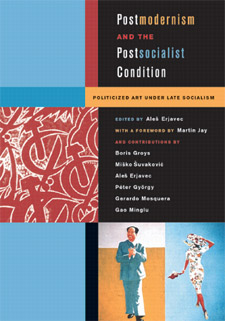 | Title: Postmodernism and the postsocialist condition: politicized art under late socialism Author: Erjavec, Aleš Published: University of California Press, 2003 Subjects: Art | Art History | Art Theory | Intellectual History | Russian and Eastern European Studies Publisher's Description: The Berlin Wall was coming down, the Soviet Union was dissolving, Communist China was well on its way down the capitalist path; the world was witnessing political and social transformations without precedent. Artists, seeing it all firsthand, responded with a revolution of their own. What form this revolution took - how artists in the 1980s marked their societies' traumatic transition from decaying socialism to an insecure future - emerges in this remarkable volume. With in-depth perspectives on art and artists in the former Soviet Union, the Balkans and Mitteleuropa, China, and Cuba - all from scholars and art critics who were players in the tumultuous cultural landscapes they describe - this stunningly illustrated collection captures a singular period in the history of world art, and a critical moment in the cultural and political transition from the last century to our own. Authors Ales Erjavec, Gao Minglu, Boris Groys, Péter György, Gerardo Mosquera, and Misko Suvakovic observe distinct national differences in artistic responses to the social and political challenges of the time. But their essays also reveal a clear pattern in the ways in which artists registered the exhaustion of the socialist vision and absorbed the influence of art movements such as constructivism, pop art, and conceptual art, as well as the provocations of western pop culture. Indebted to but not derived from capitalist postmodernism, the result was a unique version of postsocialist postmodernism, an artistic/political innovation clearly identified and illustrated for the first time in these pages. [brief] Similar Items |
| 56. | 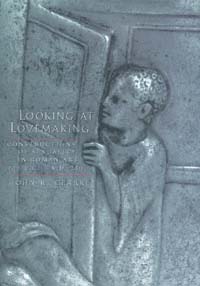 | Title: Looking at lovemaking: constructions of sexuality in Roman art, 100 B.C.-A.D. 250 Author: Clarke, John R 1945- Published: University of California Press, 1998 Subjects: Art | Classics | Art and Architecture | Art History | History | Gender Studies Publisher's Description: What did sex mean to the ancient Romans? In this lavishly illustrated study, John R. Clarke investigates a rich assortment of Roman erotic art to answer this question - and along the way, he reveals a society quite different from our own. Clarke reevaluates our understanding of Roman art and society in a study informed by recent gender and cultural studies, and focusing for the first time on attitudes toward the erotic among both the Roman non-elite and women. This splendid volume is the first study of erotic art and sexuality to set these works - many newly discovered and previously unpublished - in their ancient context and the first to define the differences between modern and ancient concepts of sexuality using clear visual evidence.Roman artists pictured a great range of human sexual activities - far beyond those mentioned in classical literature - including sex between men and women, men and men, women and women, men and boys, threesomes, foursomes, and more. Roman citizens paid artists to decorate expensive objects, such as silver and cameo glass, with scenes of lovemaking. Erotic works were created for and sold to a broad range of consumers, from the elite to the very poor, during a period spanning the first century B.C. through the mid-third century of our era. This erotic art was not hidden away, but was displayed proudly in homes as signs of wealth and luxury. In public spaces, artists often depicted outrageous sexual acrobatics to make people laugh. Looking at Lovemaking depicts a sophisticated, pre-Christian society that placed a high value on sexual pleasure and the art that represented it. Clarke shows how this culture evolved within religious, social, and legal frameworks that were vastly different from our own and contributes an original and controversial chapter to the history of human sexuality. [brief] Similar Items |
| 57. | 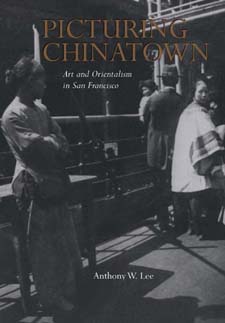 | Title: Picturing Chinatown: art and orientalism in San Francisco Author: Lee, Anthony W 1960- Published: University of California Press, 2001 Subjects: Art | California and the West | Asian American Studies | Photography | Art History Publisher's Description: This visually and intellectually exciting book brings the history of San Francisco's Chinatown alive by taking a close look at images of the quarter created during its first hundred years, from 1850 to 1950. Picturing Chinatown contains more than 160 photographs and paintings, some well known and many never reproduced before, to illustrate how this famous district has acted on the photographic and painterly imagination. Bringing together art history and the social and political history of San Francisco, this vividly detailed study unravels the complex cultural encounter that occurred between the women and men living in Chinatown and the artists who walked its streets, observed its commerce, and visited its nightclubs. Artistic representations of San Francisco's Chinatown include the work of some of the city's most gifted artists, among them the photographers Laura Adams Armer, Arnold Genthe, Dorothea Lange, Eadweard Muybridge, and Carleton Watkins and the painters Edwin Deakin, Yun Gee, Theodore Wores, and the members of the Chinese Revolutionary Artists' Club. Looking at the work of these artists and many others, Anthony Lee shows how their experiences in the district helped encourage, and even structured, some of their most ambitious experiments with brush and lens. In addition to discussing important developments in modern art history, Lee highlights the social and political context behind these striking images. He demonstrates the value of seeing paintings and photographs as cultural documents, and in so doing, opens a fascinating new perspective on San Francisco's Chinatown. [brief] Similar Items |
| 58. | 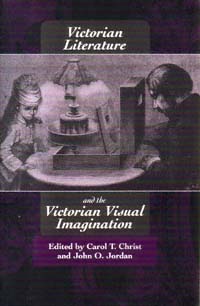 | Title: Victorian literature and the Victorian visual imagination Author: Christ, Carol T Published: University of California Press, 1995 Subjects: Literature | Art History | English Literature | Victorian History | Literary Theory and Criticism Publisher's Description: Nineteenth-century British culture frequently represented the eye as the preeminent organ of truth. These essays explore the relationship between the verbal and the visual in the Victorian imagination. They range broadly over topics that include the relationship of optical devices to the visual imagination, the role of photography in changing the conception of evidence and truth, the changing partnership between illustrator and novelist, and the ways in which literary texts represent the visual. Together they begin to construct a history of seeing in the Victorian period. [brief] Similar Items |
| 59. | 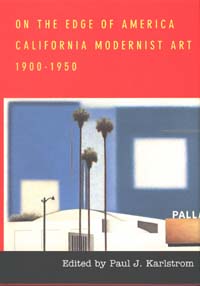 | Title: On the edge of America: California modernist art, 1900-1950 Author: Karlstrom, Paul J Published: University of California Press, 1996 Subjects: Art | Art History | California and the West | United States History | Californian and Western History Publisher's Description: To many, California's social and cultural identity has set it apart from the rest of the nation. Identified almost exclusively with Hollywood and popular culture, the entire region has been denied a meaningful relationship to mainstream twentieth-century modernism. This groundbreaking collection emphatically challenges that assumption. In essays about California art during the first half of the century, the contributors evoke a culture, now recognizable as modernist, that reflects the actual circumstances of contemporary West Coast artistic experience in all its richness. The subjects include painting, murals, sculpture, film, photography, and architecture.The issue of regionalism is central to this remarkable collection. How do we build a cultural portrait of an area that reveals its distinctive character while recognizing its participation in the larger art historical framework? Through the essays runs the theme of an alternative culture that transformed modernism to suit its own regional imperatives. Compelled by a sense of distance and the need for reinvention, California artists created traditions for a new cultural landscape and society. On the Edge of America is an enlightening and visually exciting addition to the growing literature on California art and culture. Through its fresh and expanded view of modernism, it is also well suited to the formulation of a truly national cultural narrative, one that embraces the edges as well as the center of American creative life. [brief] Similar Items |
| 60. | 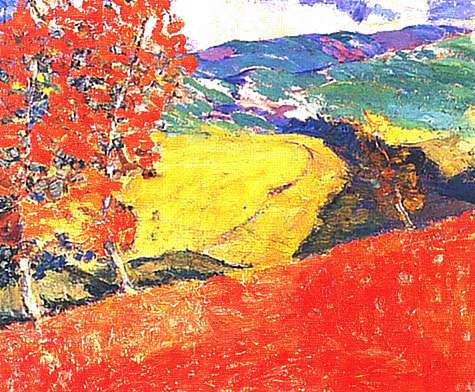 | Title: The Society of Six: California colorists Author: Boas, Nancy 1934- Published: University of California Press, 1997 Subjects: Art | Art History | California and the West | Californian and Western History Publisher's Description: Six plein-air painters in Oakland, California, joined together in 1917 to form an association that lasted nearly fifteen years. The Society of Six - Selden Connor Gile, Maurice Logan, William H. Clapp, August F. Gay, Bernard von Eichman, and Louis Siegriest - created a color-centered modernist idiom that shocked establishment tastes but remains the most advanced painting of its era in Northern California. Nancy Boas's well-informed and sumptuously illustrated chronicle recognizes the importance of these six painters in the history of American Post-Impressionism.The Six found themselves in the position of an avant garde not because they set out to reject conventionality, but because they aspired to create their own indigenous modernism. While the artists were considered outsiders in their time, their work is now recognized as part of the vital and enduring lineage of American art. Depression hardship ended the Six's ascendancy, but their painterliness, use of color, and deep alliance with the land and the light became a beacon for postwar Northern California modern painters such as Richard Diebenkorn and Wayne Thiebaud. Combining biography and critical analysis, Nancy Boas offers a fitting tribute to the lives and exhilarating painting of the Society of Six. [brief] Similar Items |